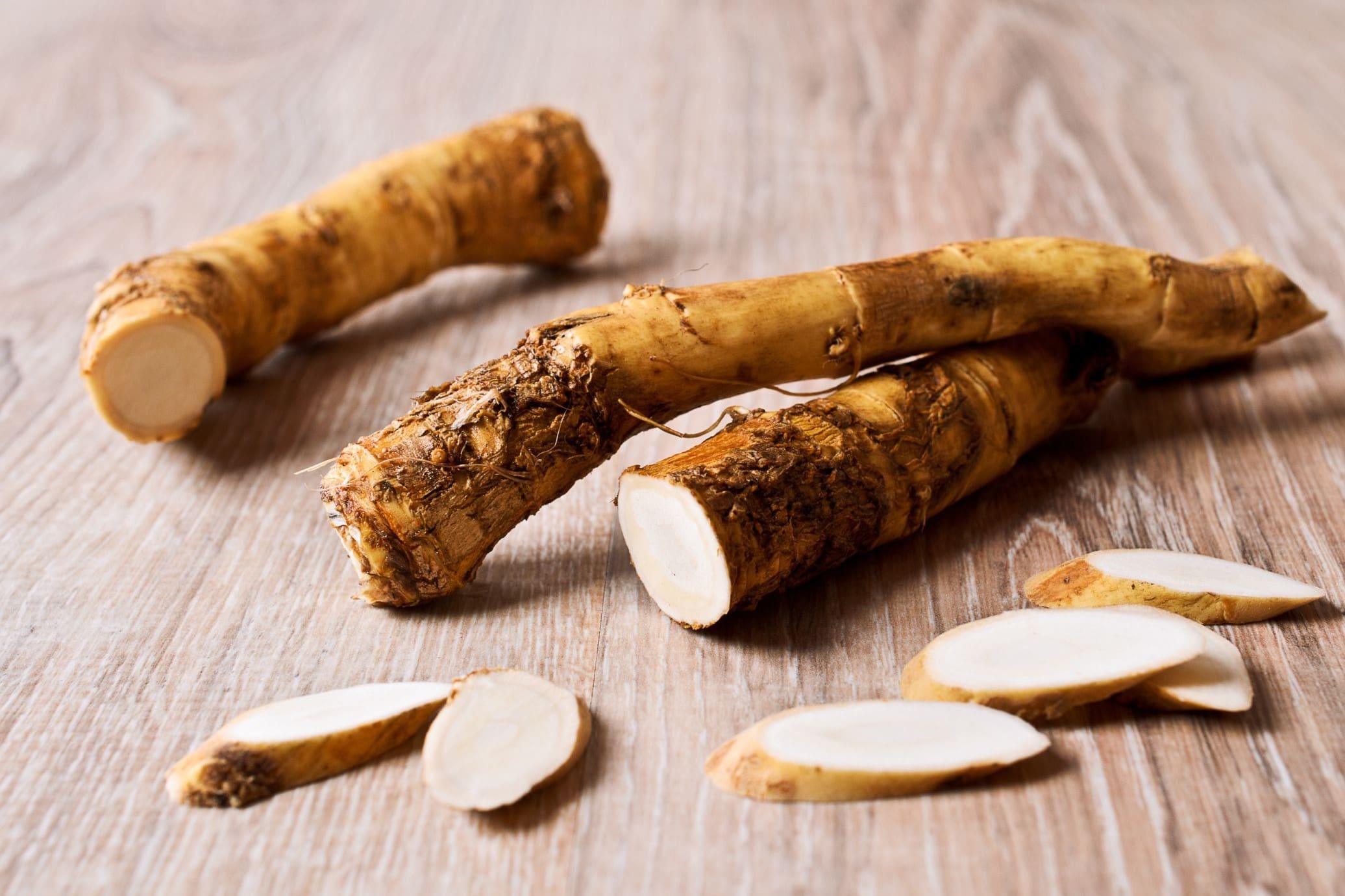
Horseradish might seem like just another condiment, but there's more to this spicy root than meets the eye. Did you know that horseradish has been used for over 3,000 years? Ancient Egyptians, Greeks, and Romans all valued this pungent plant. Horseradish is not only a culinary delight but also boasts medicinal properties. It can help with digestion, respiratory issues, and even act as a natural antibiotic. Plus, it's incredibly versatile in the kitchen, adding a zesty kick to sauces, meats, and even cocktails. Ready to learn more? Here are 25 fascinating facts about horseradish that will spice up your knowledge!
Key Takeaways:
- Horseradish, a pungent root vegetable, has a rich history dating back to ancient Egypt and offers health benefits like boosting the immune system and fighting cancer. It's also a versatile ingredient in cooking, adding a spicy kick to dishes.
- Did you know that horseradish is not only a flavorful condiment but also a natural insect repellent? It's rich in vitamin C, low in calories, and has been used in traditional medicine to relieve muscle pain and arthritis. Plus, there's even a Horseradish Festival in Illinois!
What is Horseradish?
Horseradish is a root vegetable known for its pungent flavor and aroma. Often used as a condiment, it adds a spicy kick to various dishes. Here are some fascinating facts about horseradish that you might not know.
-
Horseradish belongs to the Brassicaceae family, which includes mustard, wasabi, broccoli, and cabbage.
-
The plant has been cultivated for over 3,000 years, with origins tracing back to Eastern Europe.
-
Ancient Egyptians used horseradish as early as 1500 B.C. for its medicinal properties.
-
The name "horseradish" comes from the German word "meerrettich," which means "sea radish." English speakers mispronounced "meer" as "mare," leading to the name "horseradish."
Nutritional Benefits of Horseradish
Horseradish isn't just about the heat; it also packs a nutritional punch. Let's look at some of its health benefits.
-
Rich in vitamin C, horseradish helps boost the immune system and fight off infections.
-
Contains glucosinolates, compounds that have been shown to have cancer-fighting properties.
-
Low in calories, making it a great addition to a healthy diet.
-
Acts as a natural diuretic, helping to flush out toxins from the body.
Culinary Uses of Horseradish
Horseradish is a versatile ingredient in the kitchen. Here are some ways it can be used in cooking.
-
Often grated and mixed with vinegar to create a pungent condiment for meats and sandwiches.
-
Used in making cocktail sauce, especially for seafood like shrimp and oysters.
-
Can be added to mashed potatoes for an extra kick of flavor.
-
Mixed into salad dressings to give them a spicy twist.
Growing and Harvesting Horseradish
Interested in growing your own horseradish? Here are some facts about its cultivation.
-
Horseradish is a hardy perennial plant that can grow in various soil types.
-
It prefers full sun but can tolerate partial shade.
-
The best time to plant horseradish is in early spring or late fall.
-
Harvesting usually takes place in late fall, after the first frost, which helps to enhance its flavor.
Historical and Cultural Significance
Horseradish has played a role in various cultures and traditions throughout history.
-
In Jewish tradition, horseradish is one of the bitter herbs eaten during Passover to symbolize the bitterness of slavery.
-
During the Renaissance, horseradish was used as a medicinal plant to treat respiratory issues and digestive problems.
-
In the 1600s, it became popular in England as a condiment for beef and oysters.
-
In the United States, horseradish gained popularity in the 19th century, especially in the Midwest.
Fun and Unusual Facts
Horseradish has some quirky and lesser-known facts that might surprise you.
-
The pungent smell of horseradish is due to the release of isothiocyanate compounds when the root is cut or grated.
-
Horseradish can be used as a natural insect repellent in gardens.
-
The largest producer of horseradish in the world is the United States, particularly in Illinois.
-
There is a Horseradish Festival held annually in Collinsville, Illinois, celebrating all things horseradish.
-
Horseradish is sometimes used in traditional medicine to relieve muscle pain and arthritis.
Horseradish is more than just a spicy condiment. Its rich history, nutritional benefits, and versatile uses make it a fascinating plant worth knowing about.
Horseradish: A Root Worth Knowing
Horseradish isn't just a spicy condiment; it's a root with a rich history and surprising benefits. From its ancient medicinal uses to its role in modern kitchens, this plant has proven its versatility. Packed with vitamin C, antioxidants, and antimicrobial properties, horseradish supports health in unexpected ways. Its pungent flavor can elevate dishes, making it a favorite among chefs and home cooks alike.
Whether you're grating it fresh or using it in sauces, horseradish adds a unique kick that’s hard to replicate. Plus, growing your own horseradish can be a rewarding experience, offering fresh roots year-round. So next time you reach for that jar of horseradish, remember the fascinating facts behind this humble root. Embrace its bold flavor and numerous benefits, and let horseradish spice up your culinary adventures.
Frequently Asked Questions
Was this page helpful?
Our commitment to delivering trustworthy and engaging content is at the heart of what we do. Each fact on our site is contributed by real users like you, bringing a wealth of diverse insights and information. To ensure the highest standards of accuracy and reliability, our dedicated editors meticulously review each submission. This process guarantees that the facts we share are not only fascinating but also credible. Trust in our commitment to quality and authenticity as you explore and learn with us.


